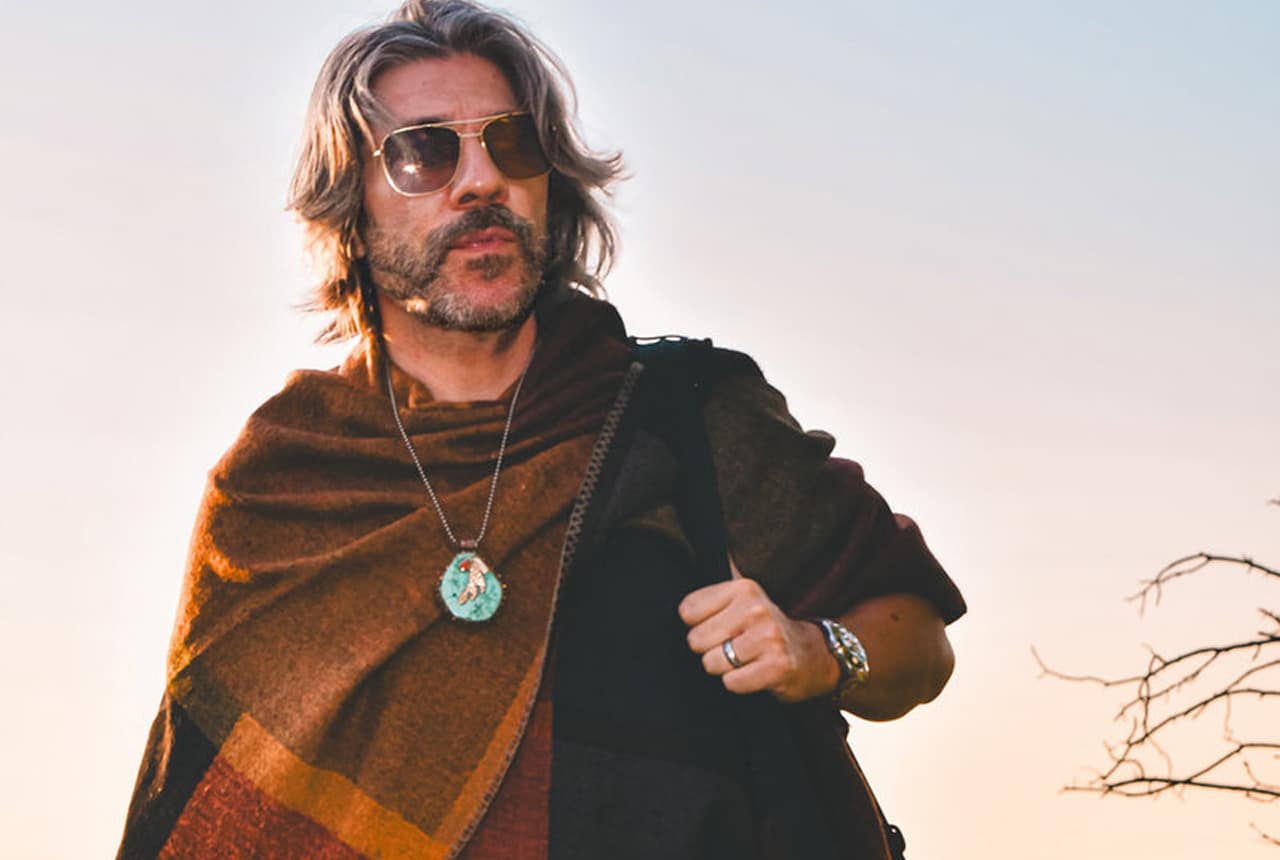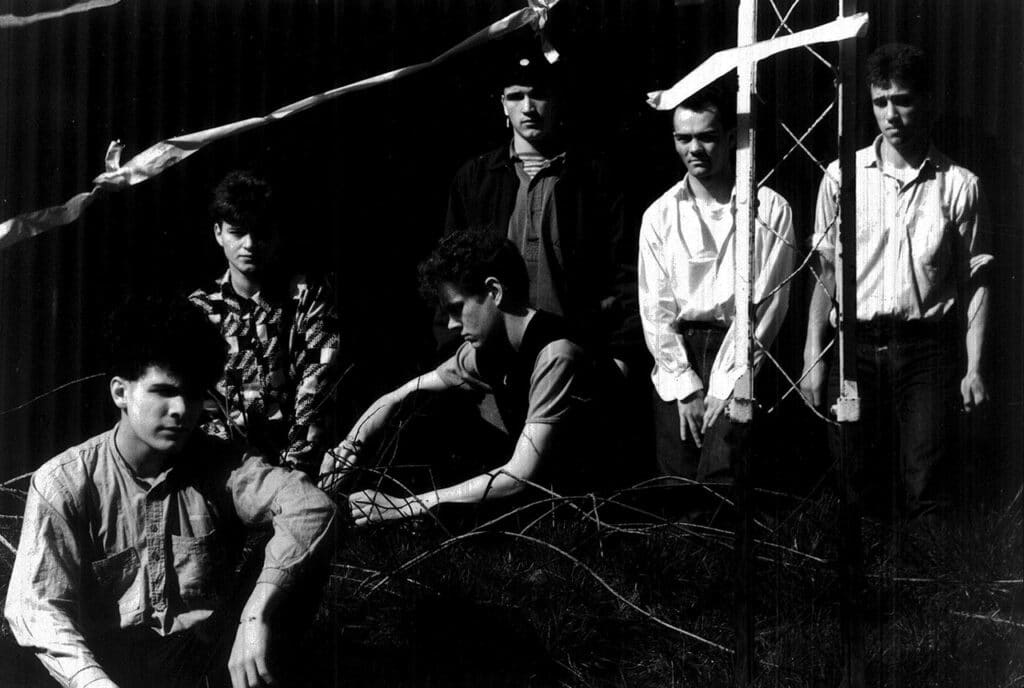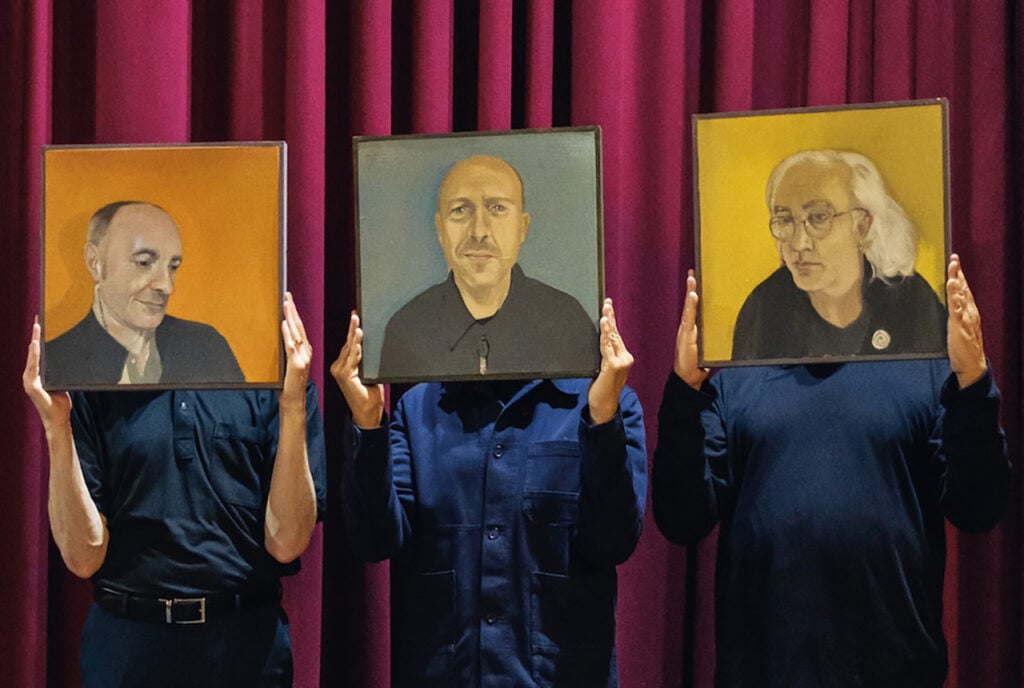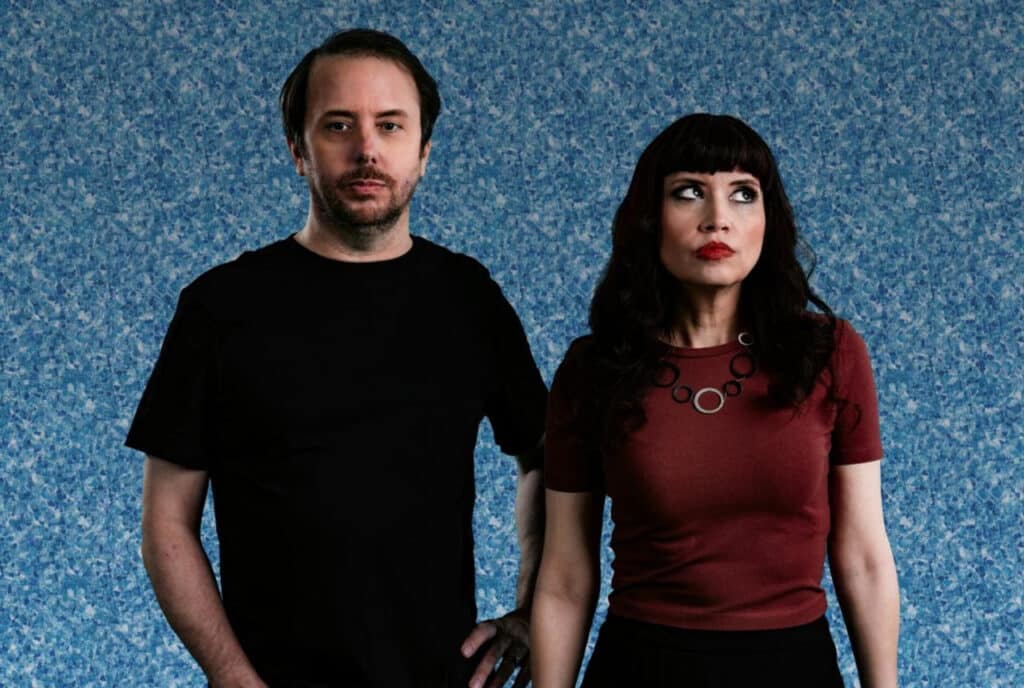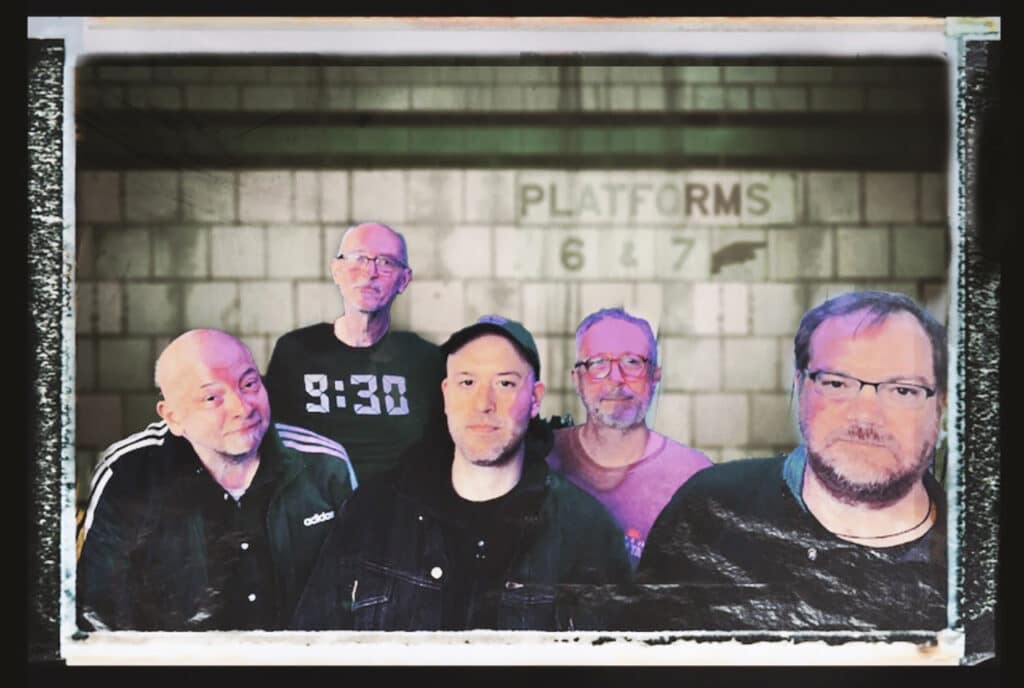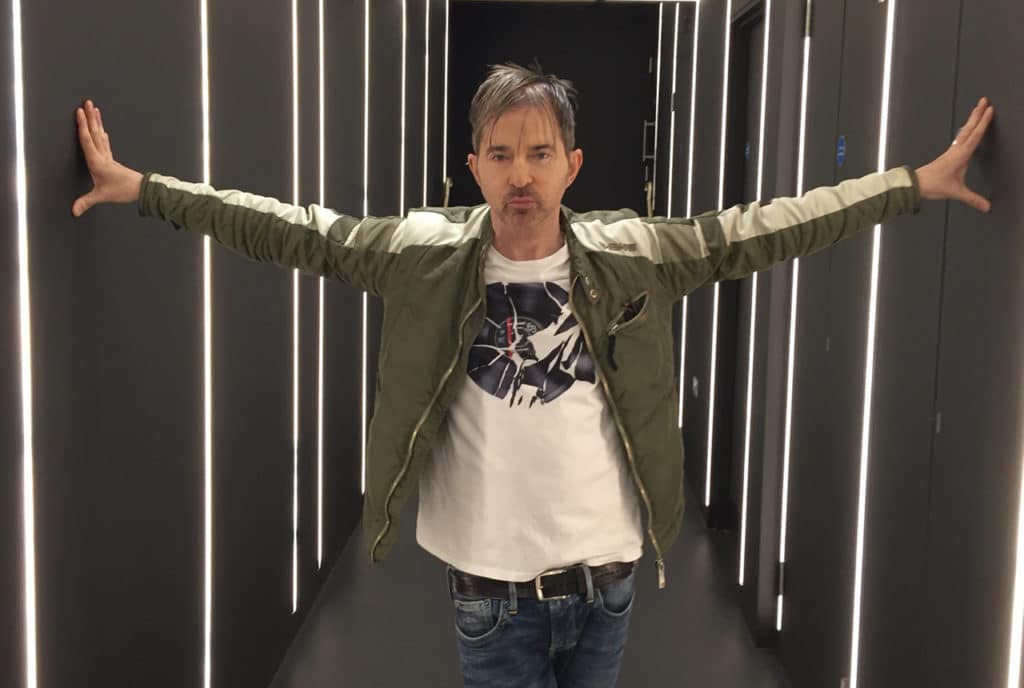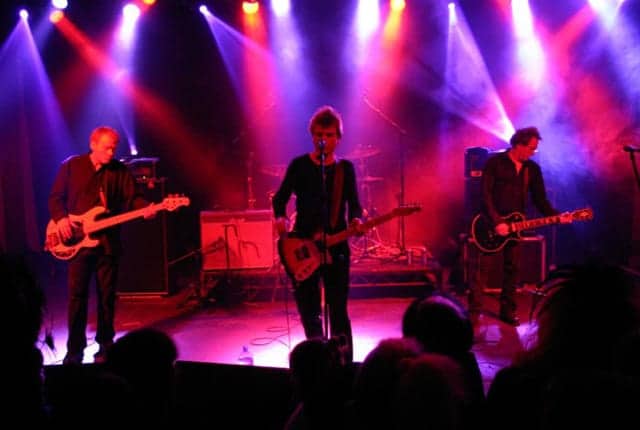Sidelined from the music he typically made, Eric ‘Cashew’ Harding (Eagle Winged Palace) shifted to instrumental works for his latest project, Head Shoppe. The innovative music on Head Shoppe’s self-titled debut album combines classical guitars, vintage synths, field recordings, and other elements into psychedelic folk-oriented soundscapes. To bring his ideas to life, Harding enlisted Kenneth James Gibson to mix and produce the album.
In a Zoom interview, Harding discussed the origins of Head Shoppe and the album’s creation.
How you came to start Head Shoppe? How did this project come together, and what were the inspirations behind it?
Eric Harding: It’s a terrible way to begin, but I think health issues kind of pushed me into this situation. Bad sleep, and even worse, migraine headaches kind of pulled me out of the live music scene for a while and the more high-energy music that I was doing. I was sidelined, and I just started making music that was a little more ethereal and cerebral and instrumental. And another thing about the health issues was I just didn’t want to sing. It just kind of hurt to sing. I just I wasn’t into it as much because I was putting guardrails around myself, so my headache wouldn’t get worse or it wouldn’t trigger. That kind of thing. I noticed that my voice wasn’t working very well, and it just wasn’t conveying what I wanted to. I just started using music that I thought melodically could still be an interesting and compelling piece without having something message oriented on it, like a poem or whatever. So I started doing that, as just a bedroom production, just to make it easy.
Music has gotten so easy to make on your home devices or whatever. I just went in that direction. But I found out that I was just a terrible, terrible engineer, and I just couldn’t make something truly engaging, sonically engaging, with my limited gear and my limited knowledge of mixing and editing. So I reached out to Ken Gibson. I had been listening to his music for a long time, and we’d kind of been in the same scene. I really don’t think I had met him as opposed to more of a handshake kind of thing.
So I reached out to him, and I said, ‘Hey, I’ve got this music that is probably up your alley. I need help.’ And I reached out to him mostly because Covid was happening too. I knew everybody was sidelined at home, and I figured everybody could use the work. And so I reached out to him, and I asked him to produce this for me, to just kind of watch over me and help me put these ideas together in an aesthetically pleasing way since I knew his tastes. And I knew I’d be in safe hands. And that’s just kind of where it’s been. We’ve been making this for a couple of years, and it was only recently where we’re like, ‘Okay, well, we better put together a live act. It’s time to do some time, perform this.’ So that’s kind of where we’re at right now.
You combine acoustic and organic sounds in an interesting way. Could you talk about your creative process and perhaps to what degree sounds might dictate the compositional process?
Eric Harding: Well, I am trained as a guitar player, but not classically trained. But I was raised in a classical household, and so later in life I began teaching myself major pieces and just transcribed them myself and learned to improve myself as a player. But never a concert hall caliber. I always felt that there was, and maybe this was my upbringing, a lot of opportunity to blend the history of classical guitar and the sound of it, the feel, the romance of it, with more futuristic sounds. And it was done; it had been done in the sixties and seventies with new production techniques happening at that time and new synthesizers. Whether it’s an Italian sci-fi movie from the early seventies or NASA videos, internal videos from 1981 or something, they were doing that. It never became its own genre or anything like that, but it happened. And it also has a little connection to some of the new age music of that era too. So I felt that was an interesting area to poke around in, kind of to cover up for my not being a great concert hall guitar player, and also to try to say something new. Again, it had been done before, but try to take those ideas and kind of put ‘em in the 21st century and keep them moving along.
How did it evolve from those initial ideas to the end results?
Eric Harding: This leads us to where we’re going next. There are live drums; I played live drums on the record. I felt it was necessary to give it not only a vintage feel but also to keep things moving a little bit and just keep things compelling, not too slow. And since then I realized that, you know what, maybe it could have been a little bit better using some of these rhythms, these polyrhythms and strumming patterns. It would probably be more inclined to Tropicália or Brazilian music or folk music. And so we figure if we were a live act, it’s very tough. No matter what amplifier I am using or what connection I’m using with my nylon string set up and the pickups and what have you, it’s very hard to get super loud. So a drum, like having a full drum kit, having a live electric bass, it’s just very tough. We figured, well, instead of trying to bring in a live drummer for these, why don’t we just bring in what would naturally go well with a nylon string and bring in a percussionist, someone who plays congas and bongos and whatever it may be. So our music is moving even more in a kind of Latin jazz or Latin folk area. So it’s going in that direction a little bit more, which is great. And I’m totally excited about what we can unlock there.
However, having said that, and as we’ve been rehearsing for the past few months and we’ve just recorded this neat little studio session to reach out to bookers and festival people and what have you, we’re like, ‘it sounds really neat, and it’s got a really neat vibe.’ And this has been said actually for a while now from the other players, but they’re like, but we need a bass. I feel like the bass is missing, and it’s true. And I’ve been trying to not have the bass because overall it will take the volume up a little bit more and kind of put us more in a pop format, I suppose. But watching it, I think everybody is right. I think a bass player is necessary. And so we now have someone coming in and adding that element in a subtle way, more of a subtle vintage way in maybe a Hofner bass or a Fender, as opposed to going too crazy with the bass. So it’s kind of moving in that direction. It’s still evolving, which is kind of neat.
When you initially approached Kenneth, did you have a strong sense of what you wanted the collaboration to be like? Did it take any unexpected directions?
Eric Harding: Yeah. Well, the music that I was listening to of Ken’s was more his ambient music. That was during those peak years where I was in a bit of agony of staying up all night in pain. I use a lot of sonic therapy, and again, I’ve known Ken’s music from an act that he played with called Bell Gardens. They’re national, but I saw them a lot locally and they were kind of one of us. That was more soundscapes. It did have drums and what have you, but I was more or less in tune at that moment with his ambient music. But I also saw that he kind of got his hands all over everything.
He has the conceptual ambient music that he’s done. He’s had the nineties experience of the experimental trip-hop kind of stuff, and he plays in the country band. And I was like, ‘Well, this guy’s for me, this guy knows music.’ He knows vintage music, he knows forward-future progressive music. So there were some choices that I was making in those early bedroom sessions that … I was using a drum machine, for instance, and I’m just not very good at drum machines, just little things that I needed his help on getting it right. And so that’s kind of what made his help and collaboration really needed on this, and it helped so much. I mean, there is such a big difference between this and where I was going in 2020. So I’m very happy about that.
You said you didn’t want to sing because of health reasons. Did you intend it to remain instrumental? Did you consider possibly working with other vocalists?
Eric Harding: Well, I wanted to focus on soundscapes and what have you, but I still had the old singer-songwriter in me, and I was like, ‘Oh, I got to sing and one of ‘em is a cover and I have to sing it.’ So I made a pass and I had some lyrics for it, and I transcribed the Spanish lyrics properly and recorded them. And I lived with them for a little bit, but I just wasn’t feeling it. I just was like, ‘I’m not at my best right now.’ I didn’t feel that I was doing my best, and I felt I could probably get a lot more mileage. For instance, on ‘Gracias A La Vida,’ which is the one cover song, I could probably get a lot more mileage than my voice, by bringing in a woodwind instrument that can just go bonkers on that melody and continue the surrealism of the track itself as opposed to my voice. Basically, I think my voice brought in too much human or a little too much humanity into a piece that felt more dreamy, and it was pulling me out of it. So that was one of the main examples of ‘I think we can just truly make this a instrumental record. 100%.’
Could you talk about the videos?
Eric Harding: ‘Parque De Chapultepec,’ that was the first song that Ken and I finished, truly, like 100% signing off on, ‘We’ve got to put this out there.’ We felt it needed some visuals, and I was debating, ‘What could this be? What does it sound like? It sounds neat, it sounds dreamy.’ And I’m used to using my own image in past projects and that has just always been the way growing up in the MTV era. So I was thinking, well, maybe I can rent out some neat soundstage or something and make it look like an old TV show performance of me in a turtleneck and some interesting John Williams kind of thing.
And we were like ‘it could work’, but that seemed to be the more expensive thing. We knew of Lucas and Christina [Studio Sparks], they’re these two artists in Portugal. We knew their work. They did something with Ken for his record, and they were currently working with Panda Bear on their most recent record and the tour, and we just loved that. And so we asked him, ‘Hey, you know what we got, this is what we’re feeling.’ And we did a mood board type of thing. It was kind of like, let’s throw in just fascinating animation, in fascinating fashion. Let’s throw in themes. And we just kind of put something together and just went over it and brainstormed for a couple of weeks, and they’re like,’Okay, we got this. We’ll take it from here and we’ll start showing some drafts in a few weeks and whatever.’ So it started coming out great. I was just super happy and thrilled, and that one was really awesome.
And when the record was ready and then we had this one, ‘Séance.’ This was the last one that we had finished. The other ones have been sitting around for a while and they’re great and everything, but since ‘Seance’ was fresh in our mind, we’re like, ’Let’s do this one.’ There’s a lot of opportunity to really build a world in this one, especially with their style. So again, we just kind of built a theme book kind of thing, and they just went to town. Their process was really neat, and they’re just great. I love it. And I’m always into keeping things steady with brand, branding, where there’s a connection between music and artists, So I will continue asking to make pieces as long as they’re okay with it, and build a theme.
You talked about getting the live show together. What is the timeframe for that?
Eric Harding: LA is a very interesting spot right now. While it’s a live music Mecca, historically, the scene is not as healthy as it used to be. And I think that’s just live music all over the place. All the live music venues, or a good majority of them, are meant for the traditional rock format. And I’m talking about just the local venues. But in the past year and a half, there’s just been a step up of venues that are event minded and experiential, that take you out of the clubs a little bit. Outdoor festivals that are not big stage setups. More like, ‘all right, we’re going to set up a DJ, a violinist, a rapper, a comedian, and a theologist’ and things have just been happening. There’s just been this scene of deep listening events happening. Some are outdoors, some are, instead of rock music venues, they’re more like art galleries or small theater places in Hollywood. So we’ve been keeping an eye out for those kinds of venues and we want to do it right. We’re doing a couple of out-of-town gigs first to kind of get our beaks wet a little bit, going out to Idlewild, which is where Ken is set up.
Our timeline for sure is fall, but at the moment we are submitting ourselves for any last minute changes in lineups that we can jump into or what have you.
For more info and to buy music, visit headshoppe.bandcamp.com.
